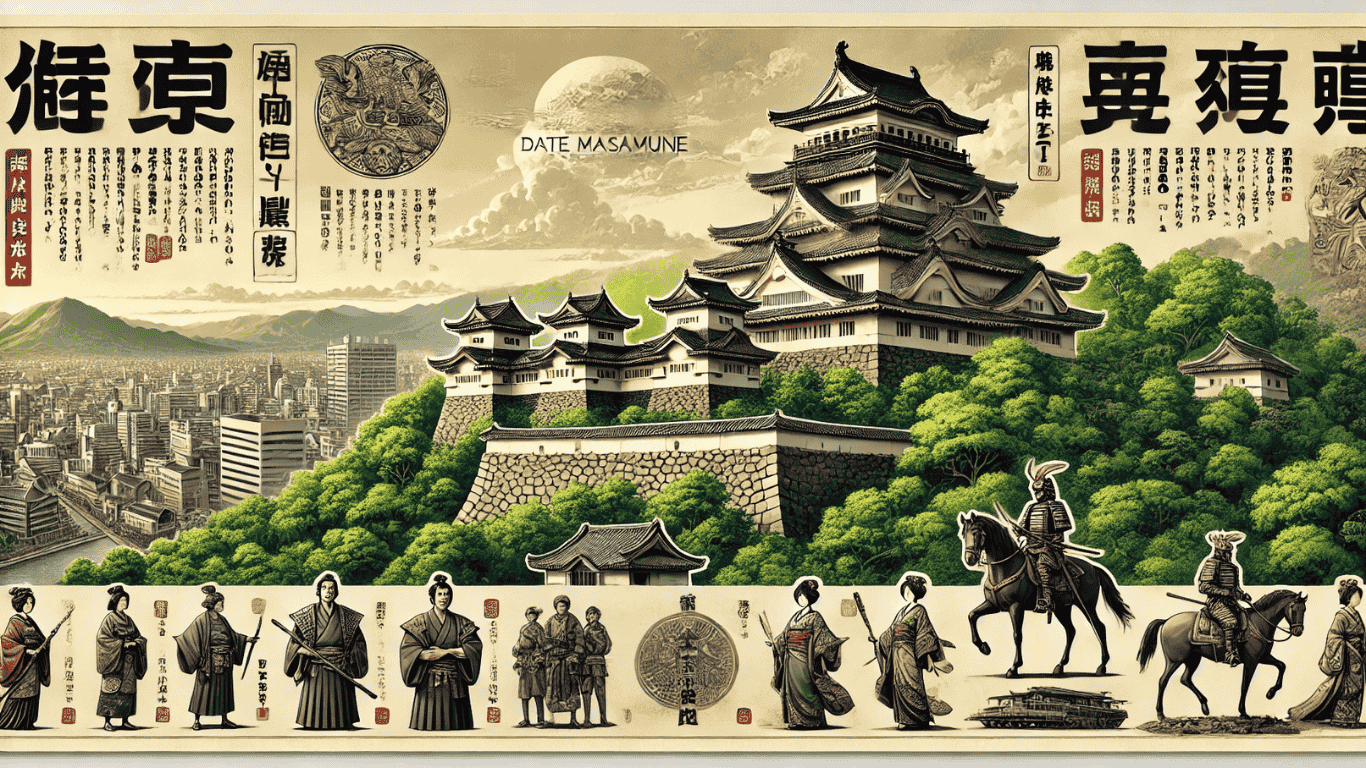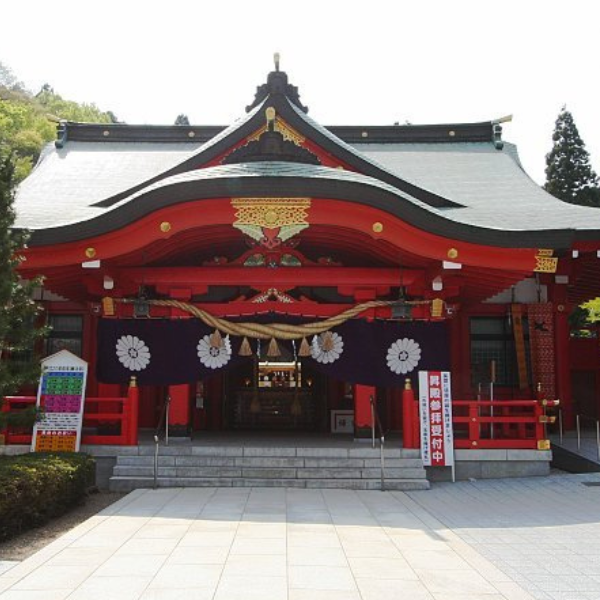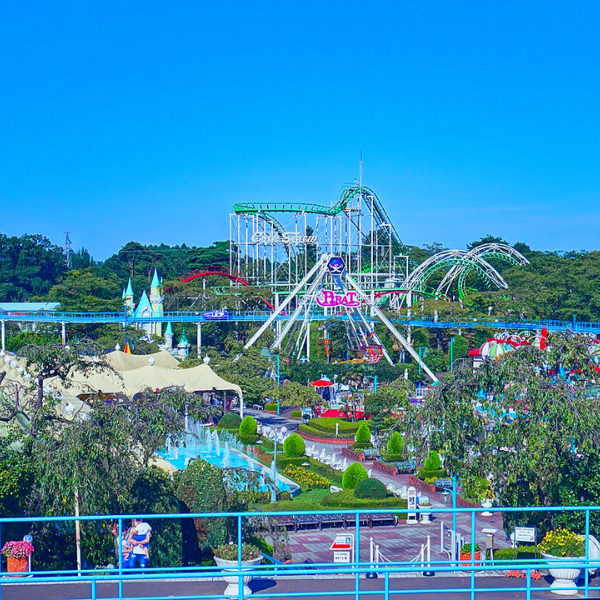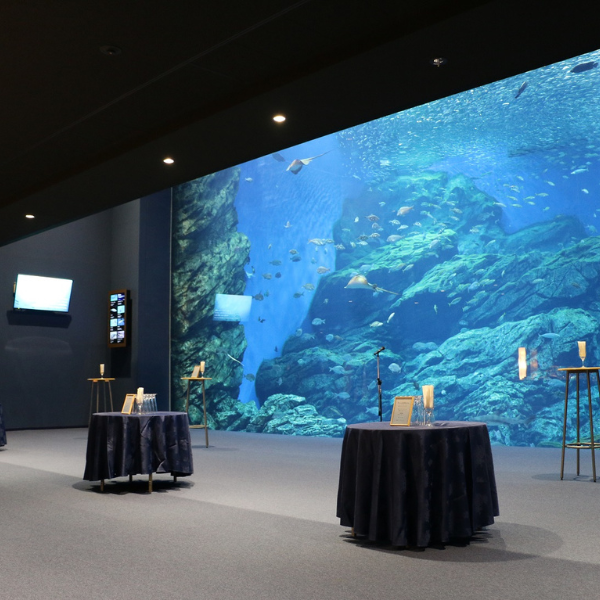Sendai Castle , also known as Aoba Castle . Built by the powerful feudal lord Date Masamune in 1601, this castle played a crucial role in the history of the Tohoku region during the Edo period . Though much of the original structure was destroyed over the centuries, the Aoba Castle ruins and surrounding landmarks continue to draw visitors from around the world.However, it offers a glimpse into Japan's feudal past.
In this article, we will take you on a journey through Aoba Castle’s history , exploring its significance, architectural features, and modern day attractions that still capture the spirit of Sendai Castle .
Foundation of Sendai Castle and Date Masamune's Legacy
Sendai Castle was commissioned by Date Masamune , the feudal lord who established Sendai Domain and is considered the founder of modern-day Sendai City . A brilliant military leader, Masamune built the castle on Mount Aoba for its strategic location. However, the hilltop offered a panoramic view of the Hirose River and the surrounding cliffs. It provides both natural protection and a striking vantage point over the Tohoku region .
Sendai castle aoba castle ruins
Masamune's vision for the castle extended beyond military strategy. He wanted it to serve as a symbol of his power and as the political heart of Sendai Domain . Masamune, often depicted with a striking crescent moon on his helmet, is immortalized in a grand statue at the site, looking out over the city. Moreover, the statue of Date Masamune is an iconic symbol of Sendai’s pride in its feudal history .
Aoba Castle's Historical Significance

Throughout the Edo period , Aoba Castle served as the political and military center for the Date clan . However, the castle was not only a powerful fortress but also a symbol of Masamune’s forward-thinking leadership. During this time, the Tokugawa shogunate ruled Japan, and Sendai Castle played a key role in regional governance.
However, despite its grandeur, Aoba Castle was never fully completed. The tenshu main keep , a common feature of Japanese castles , was never built. Instead, the castle complex was centered around the honmaru inner bailey and ni no maru (second bailey) , with guard towers, or yagura , defending its perimeter.
Castle's Decline: Fires and Destruction
Over time, Sendai Castle suffered significant damage. In 1882, a major fire destroyed much of the castle, marking the beginning of its decline. The final blow came during World War II , when the castle was heavily bombed, leaving little but the stone walls and a few remaining structures .
Despite these tragedies, efforts to preserve and rebuild parts of the castle grounds have kept the spirit of Aoba Castle alive. Walking through the castle ruins , visitors can still see the ōte-mon (main gate) and portions of the stone walls , which serve as reminders of the castle’s former strength.
Gokoku Shrine : Honoring Japan’s Heroes
Situated within the castle grounds is the Gokoku Shrine , a solemn site dedicated to Japan's war dead. Originally constructed to commemorate those who fought in the Boshin War , the shrine has since become a place to honor soldiers who died in conflicts throughout Japan’s history.
The shrine is an important part of the castle site , providing a peaceful space for reflection amidst the ruins. Visitors come to pay their respects and experience the spiritual significance of this revered location.
Aoba Castle Museum: Preserving History
For history enthusiasts, the Aoba Castle Museum is a must visit destination. Located near the castle ruins , the museum offers a rich collection of artifacts and exhibitions related to the Date clan and the history of Sendai Castle . Here, you can view historical armor, swords, and maps, as well as learn about the daily lives of the samurai who once lived within the castle walls.
Interactive displays and videos also help bring the past to life, offering insights into the construction of the castle and the events that shaped its history. For visitors looking to understand the cultural and historical context of Aoba Castle , the museum provides an engaging and educational experience.
Virtual Reality: Reimagining the Castle’s Former Glory
Though much of Aoba Castle is now in ruins, modern technology offers visitors a chance to experience it in its full grandeur. Virtual reality exhibitions allow you to virtually walk through the castle as it stood in its prime. Using VR headsets, you can explore the castle grounds , the honmaru , and even step inside rooms that have long since disappeared.
This VR Castle Go experience is especially popular with younger visitors, offering a unique way to engage with history. The detailed reconstructions provide an immersive experience, showing what life was like for the feudal lords who ruled from this grand castle centuries ago.
Statue of Date Masamune: A Symbol of Sendai
One of the most photographed landmarks at Aoba Castle is the imposing statue of Date Masamune . Erected in 1935, the statue shows Masamune on horseback, overlooking the city he founded. The statue’s placement on the castle site is a fitting tribute to the legacy of one of Japan’s most revered leaders.
Masamune’s leadership left a lasting impact on the city, and today, his statue serves as a reminder of the feudal past that shaped modern Sendai . Visitors often take photos with the statue, connecting with the historical figure who helped define the city’s identity.
Panoramic Views of Sendai : The Castle’s Hilltop Location
One of the most striking features of Aoba Castle is its hilltop location on Mount Aoba . From the castle grounds , visitors are treated to stunning panoramic views of Sendai and the surrounding landscape. The castle’s elevation, combined with the natural cliffs to the east and south, provided both protection and a commanding view of the region.
For modern visitors, these views offer a peaceful retreat from the hustle and bustle of the city below. On clear days, you can see the expanse of Miyagi Prefecture , the Hirose River , and even catch a glimpse of the Pacific Ocean in the distance.
Visiting Aoba Castle Today: What to Expect
Today, Aoba Castle is a popular tourist destination, attracting both locals and international visitors. While the original castle structures are mostly gone, the castle ruins , Gokoku Shrine , and Aoba Castle Museum provide a rich experience for anyone interested in Japan's feudal history.
The site is easily accessible from Sendai Station , with public transportation options such as the Loople Sendai bus stopping nearby. Admission to the castle grounds is free, but there is a small fee to enter the museum or participate in the VR experiences . Whether you’re a history buff, a fan of Date Masamune , or simply someone looking for a scenic spot to relax, Sendai Castle offers something for everyone.
Enduring Legacy of Aoba Castle
Aoba Castle may be in ruins, but its legacy endures. As a symbol of the Date clan and Sendai’s rich history, the castle remains an important cultural site in Japan . Visitors come to explore the castle ruins , learn about the past, and experience the enduring influence of Date Masamune on the city he founded.
The castle’s impact on Sendai can still be felt today, in everything from the city's layout to the pride its residents take in their feudal heritage. Sendai Castle Aoba Castle ruins offer a connection to Japan’s past, inviting us to step back in time and imagine the grandeur that once stood on Mount Aoba .
Whether you are drawn by history, architecture, or simply the breathtaking views, a visit to Aoba Castle is a journey through time, offering an unforgettable glimpse into the heart of feudal Japan .
Leave a comment
Your email address will not be published. Required fields are marked *



